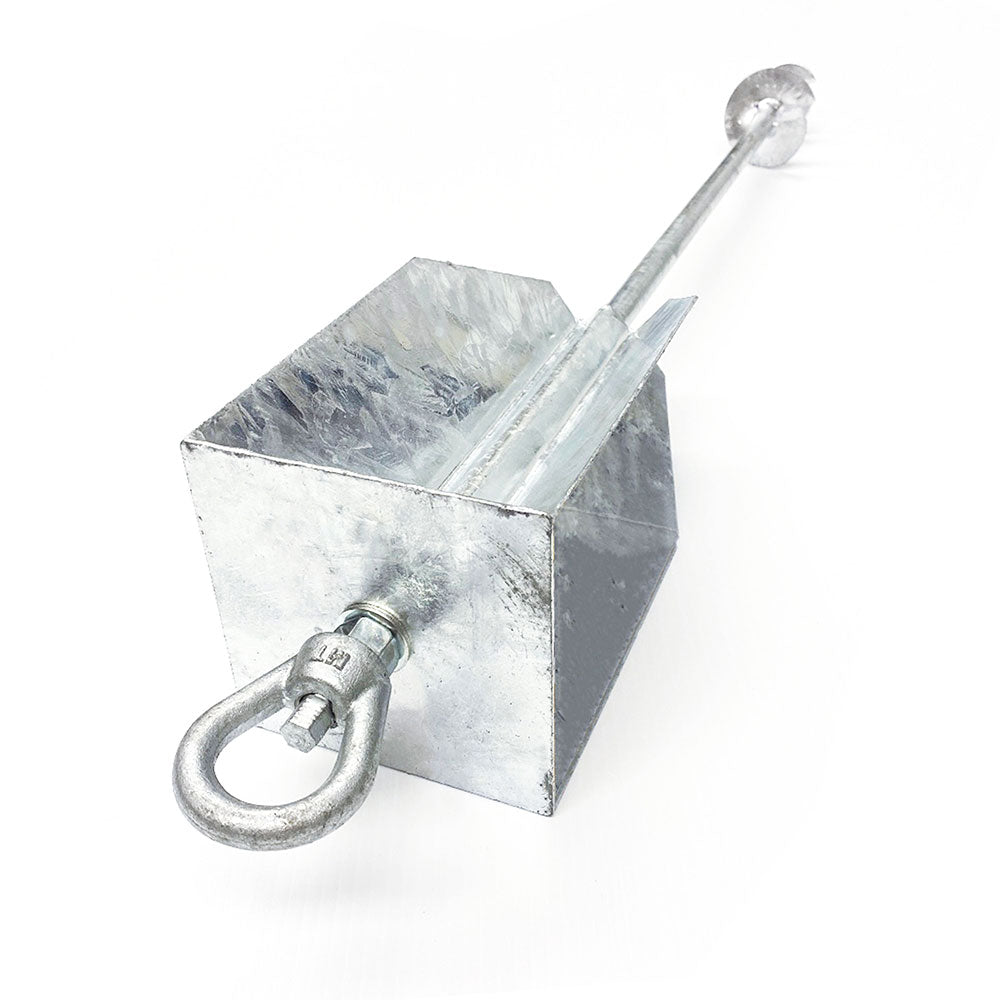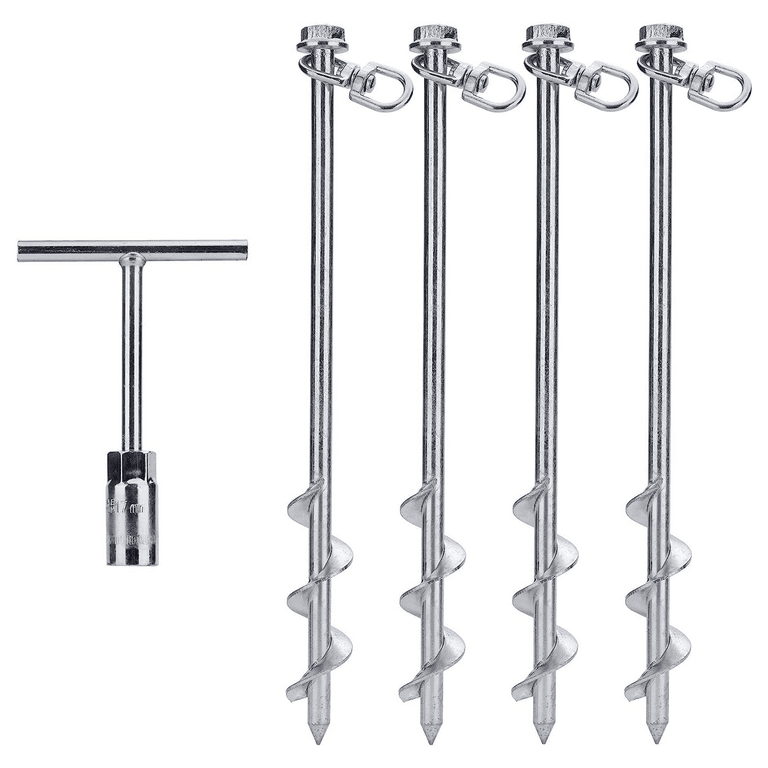Understand Why Ground Anchor Is Important for Security and Longevity
Ground supports are a vital element in construction, supplying critical assistance and stability for different frameworks. Their capability to move loads effectively to the ground not only boosts architectural stability yet also plays a considerable function in mitigating risks connected with ecological factors, such as unsteady dirt and seismic activity. Understanding the different kinds and applications of ground supports can illuminate their crucial role in guaranteeing security and sturdiness. The details of their installation and the benefits they offer may not be promptly evident, prompting further exploration into this vital topic.
Duty of Ground Anchors in Construction
Ground supports play a critical duty in construction by providing necessary assistance and stability to structures. These devices are created to move loads from a structure to the ground, ensuring that structures and other facilities stay safe under different conditions. Ground supports are especially vital in scenarios where dirt conditions are unsteady or where there is a danger of lateral activity, such as on inclines or near bodies of water.
The installation of ground supports includes drilling into the earth to reach steady soil or bedrock, where the supports can be securely secured. This process not only boosts the architectural stability of a project yet also reduces the risks associated with soil erosion and shifting. Additionally, ground supports can be used in momentary frameworks, such as building sites, where they provide necessary stabilization throughout the building procedure.
Ground anchors also add to the durability and sturdiness of frameworks by minimizing the likelihood of negotiation and failing. Ground Anchor. By efficiently distributing and taking care of lots, these crucial elements are vital in preserving safety standards and ensuring the dependability of various building and construction projects. In general, the value of ground supports in construction can not be overemphasized, as they are essential to successful design practices
Kinds of Ground Supports


While various kinds of ground anchors exist, each serves particular applications and problems within building tasks. One of the most common types consist of mechanical supports, grouted supports, and driven supports.
Mechanical supports, such as expansion supports, utilize a mechanical action to safeguard the anchor within the substratum - Ground Anchor. These are frequently employed in light-weight applications, like protecting fixtures to masonry or concrete
Grouted anchors, on the other hand, include piercing an opening, putting a steel pole or cord, and after that loading the annular area with cement. This method appropriates for high-load situations, supplying boosted stability and resistance to dynamic pressures often found in hefty building.
Driven supports are commonly installed by driving a steel pole or pipeline into the ground, making them appropriate for short-lived applications such as protecting scaffolding or formwork. When no much longer needed., they are fast to set up and can be gotten rid of quickly.
Various other specific anchoring systems consist of helical anchors, which are screw-like devices made use of in various soil problems, and deadman anchors, which rely upon the weight of a buried things to provide security. Each kind of ground support is made to satisfy specific engineering needs, guaranteeing safety and security and architectural honesty.
Advantages of Using Ground Supports
The benefits of using ground supports in building and construction jobs are considerable, enhancing both safety and architectural efficiency. Ground anchors give important resistance versus lateral pressures, such as dirt motion, wind lots, and seismic activity. This resistance helps maintain the security of structures, avoiding possible failures that might cause pricey repair work or harmful circumstances.
Furthermore, ground anchors promote the effective transfer of lots from frameworks to the you could check here bordering soil, guaranteeing a balanced distribution of weight. This lots transfer lowers the risk of settling or shifting, which can jeopardize the stability of a building gradually. By employing ground anchors, engineers can likewise develop much more effective styles, as they permit slimmer structural components while keeping security criteria.
Additionally, ground anchors are adaptable and versatile to different dirt problems and job needs. Their installation can commonly be completed promptly and with very little disruption to the surrounding environment, making them a reliable option for several construction applications. Inevitably, making use of ground anchors improves not only the resilience of frameworks but additionally contributes to a much safer working atmosphere for building and construction employees and future owners.
Typical Applications and Makes Use Of
Various building and construction tasks utilize ground supports for their effectiveness in improving security and security. These functional components are frequently utilized in various applications across the building and construction and civil engineering fields. One widespread application remains in retaining wall surfaces, where ground supports supply the essential support to protect against dirt activity and maintain i loved this structural honesty.
Furthermore, ground anchors are vital in protecting short-term structures, such as scaffolding and shoring systems, guaranteeing they stay stable throughout building activities. In the world of foundation assistance, they are made use of to strengthen existing frameworks, specifically in locations prone to ground negotiation or shifting dirt problems.
Ground anchors also discover substantial use in incline stabilization projects, where they assist reduce landslide risks by securing the soil to steady rock formations. One more significant application is in the installment of wind generators, where they safeguard the base against lateral forces produced by wind, making sure functional security and long life.
Moreover, ground supports are used in tunneling tasks to stabilize the bordering ground throughout excavation. Their diverse applications highlight the crucial duty ground supports play in keeping safety and longevity in various construction situations.
Installment Best Practices
Successful application of ground supports in different building projects rests on efficient installation methods. Appropriate installment is crucial to make sure the anchors satisfy their designated purpose and maintain architectural integrity gradually. Key ideal practices consist of detailed site evaluation, which entails examining soil conditions, lots needs, and environmental elements that might affect anchor performance.
Before installation, it is important to pick the proper type of ground support based on the particular application and soil characteristics. Making use of premium materials and sticking to maker requirements will improve the support's longevity and efficiency. Throughout setup, guarantee that the anchor is positioned at the right angle and depth, as these elements dramatically impact load-bearing capability.
Additionally, using appropriate equipment and methods is crucial, including drilling or driving methods customized to the website conditions. After setup, carrying out load testing can confirm the support's performance and determine any potential issues early. Routine inspections are likewise advised to keep an eye on the condition of the supports and bordering soil. By adhering to these setup finest engineers, methods and professionals can boost the safety and security and durability of frameworks reliant on ground supports.

Verdict
In recap, ground supports are essential components in building, dramatically improving safety and resilience. The diverse types and benefits of ground anchors, paired with their comprehensive applications, emphasize their importance in both short-term and long-term frameworks.
The installation of why not try these out ground anchors involves exploration into the earth to reach stable dirt or bedrock, where the anchors can be safely secured.The benefits of utilizing ground supports in building tasks are considerable, enhancing both security and architectural efficiency.Numerous construction jobs leverage ground supports for their effectiveness in improving stability and safety and security.Effective application of ground anchors in different building tasks pivots on effective setup methods.In summary, ground anchors are crucial parts in building and construction, dramatically boosting security and longevity.
Comments on “The Best Ways to Install a Ground Anchor for Optimal Performance”